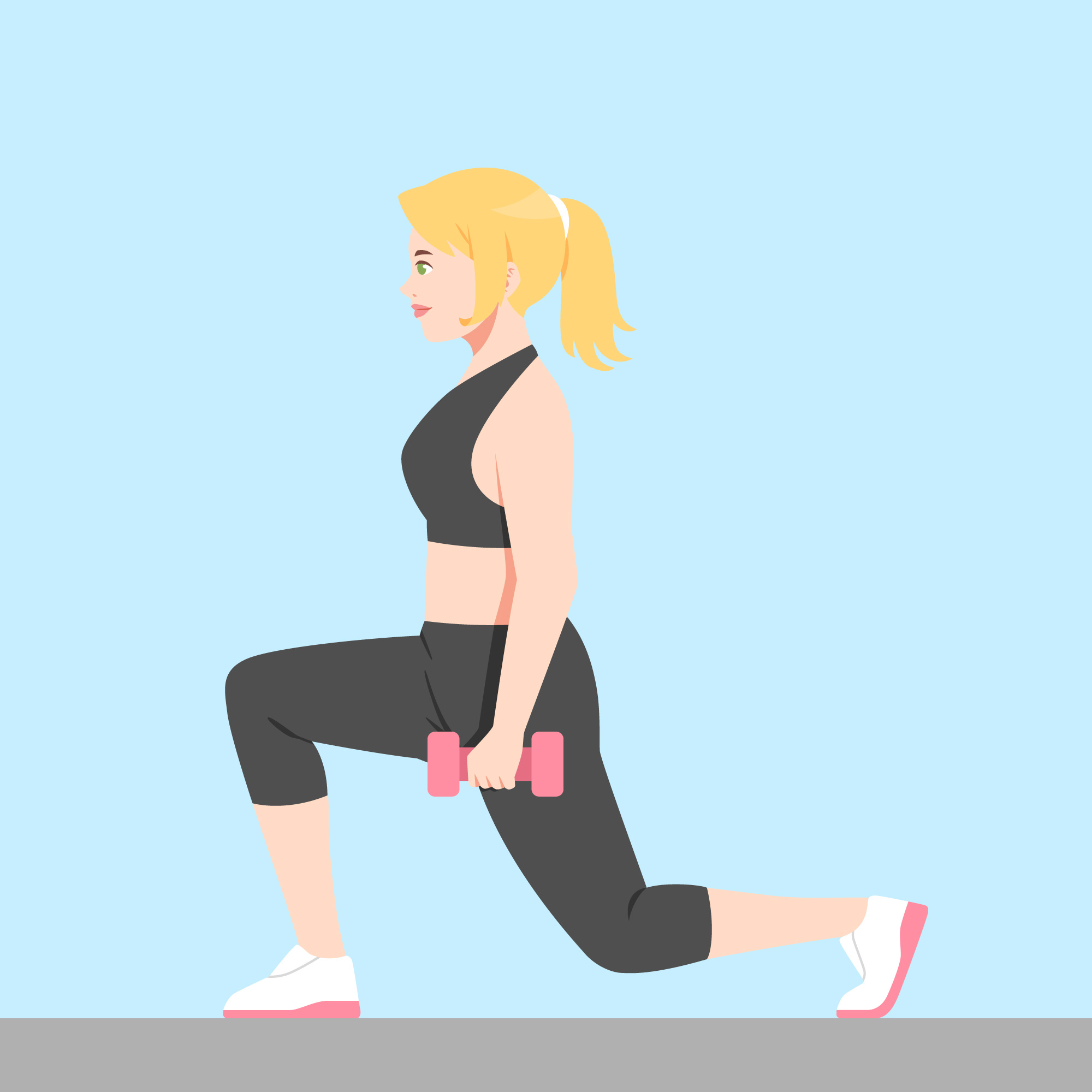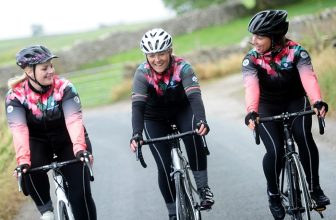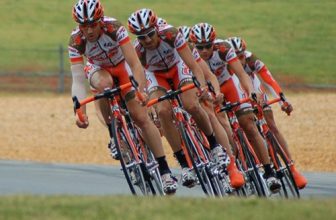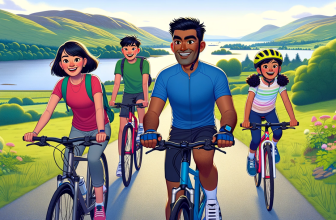Exercises to Improve Cycling Fitness and Leg Strength

- Cycling-Specific Workouts
- Strength Training for Legs Squats
- Core Strength
- Flexibility and Mobility
- Cross-Training
- Plyometrics
- Stability and Balance
- Functional Strength Training
- Recovery and Restoration
- Nutrition and Hydration
- Mental Training
- Altitude Training
- Technique and Form
- Monitoring and Feedback
- Overcoming Plateaus
- Group Rides and Community
- Safety and Injury Prevention
- Education and Continuous Learning
- Periodization
- Active Recovery
- Gear and Equipment
- Mental Endurance and Resilience
- Hydration and Electrolyte Balance
- Adaptation and Listening to Your Body
- Supplementation
- Travel and Acclimatization
- Post-Ride Recovery Rituals
- Sleep and Rest
Intervals
Short, high-intensity bursts followed by recovery. For example, 30 seconds at maximum effort, followed by 30 seconds of rest. Repeat 8-10 times.
Hill Repeats
Find a moderate to steep hill and cycle up at a hard effort, then coast or cycle slowly back down. Repeat multiple times.
Long Rides
Build endurance by gradually increasing the length of your rides.
Both bodyweight squats and weighted squats (using barbells or dumbbells) can build strength and power in the quadriceps, hamstrings, and glutes.
Lunges
Work on forward, reverse, and lateral lunges to target different parts of the leg muscles.
Leg Press
This machine-based exercise is excellent for targeting the quads, hamstrings, and glutes.
Deadlifts
They work the entire posterior chain, including the hamstrings, glutes, and lower back.
Step-Ups
Using a bench or platform, step up and down to strengthen the quads and glutes.
Leg Curls
These target the hamstrings and can be done using a machine or with resistance bands.
Calf Raises
Important for strengthening the calves, which play a role in cycling, especially when standing on the pedals.
A strong core can help with cycling posture, power transfer, and overall stability.
Planks
Including side planks and dynamic variations.
Russian Twists
With or without weights.
Bicycle Crunches
Great for obliques and overall core strength.
Leg Raises
Focus on the lower abdominal muscles.
Keeping the muscles flexible can help with recovery and prevent injuries.
Hamstring Stretches
Important since these muscles can become tight from cycling.
Quad Stretches
To relieve tension in the front of the thighs.
Calf Stretches
To maintain flexibility in the lower leg.
Hip Flexor Stretches
These muscles can become tight, especially for individuals who spend a lot of time seated.
Engaging in other sports or workouts can help improve overall fitness and reduce the risk of overuse injuries.
Running
Offers weight-bearing exercise and can help improve cardiovascular fitness.
Swimming
Provides full-body exercise without any impact, great for recovery days.
Yoga
Improves flexibility, balance, and core strength.
These explosive exercises can improve power and speed.
Box Jumps
Develop explosive power in the legs.
Bounding
Long, explosive strides focusing on getting as much height and distance as possible with each jump.
Incorporating exercises that challenge your balance and stability can be extremely beneficial for cyclists, as they help in refining bike-handling skills and strengthening stabilizer muscles.
Single-Leg Deadlifts
These work on balance, core stability, and strengthen the hamstrings and glutes.
Bosu Ball or Stability Ball Exercises
Squats or lunges on these unstable surfaces can help in enhancing stability and core strength.
Wobble Board or Balance Board Exercises
Simply standing on these and maintaining balance can be a challenge that pays dividends in bike handling.
Incorporating full-body exercises helps engage multiple muscle groups, promoting muscle balance and overall functional strength.
Kettlebell Swings
This dynamic movement not only targets the legs but also the core and upper body.
Farmer’s Walk
Holding heavy weights in each hand and walking for distance or time. This simple exercise challenges grip strength, core, and leg stamina.
While actively working out is essential, so is allowing your body to recover. This ensures muscles rebuild and grow stronger.
Foam Rolling (Myofascial Release)
Rolling out tight muscles can aid in recovery and reduce muscle soreness.
Stretching
Regular static stretching post-workout can improve flexibility and reduce muscle tension.
Massage
Regular massages can alleviate muscle tension, improve circulation, and expedite recovery.
Rest
Ensure you have rest days or lighter workout days interspersed between intense workouts to allow your body to heal and grow stronger.
These play a pivotal role in performance and recovery.
Stay Hydrated
Drinking enough water before, during, and after workouts is crucial. For longer rides, consider hydration solutions with electrolytes.
Balanced Diet
Ensure your diet is rich in lean proteins, complex carbohydrates, healthy fats, and micronutrients. This fuels workouts and aids in recovery.
Post-Workout Nutrition
Consuming proteins and carbohydrates after intense workouts can significantly help with muscle recovery.
Cycling, especially during races or long rides, can be as much a mental challenge as a physical one.
Visualization
Spend time visualizing successful rides, races, or challenging terrains.
Mindfulness and Meditation
This can help in focusing during rides and reducing anxiety or stress that can be a hindrance during performance.
Some professional cyclists train at higher altitudes where the air is thinner. This forces the body to produce more red blood cells, improving oxygen delivery and utilization when back at lower altitudes.
Hypoxic Training
Some athletes use masks or sleep in hypoxic chambers to simulate high altitude conditions, even when they’re at sea level.
Improving cycling technique can make a big difference in performance, efficiency, and injury prevention.
Pedaling Technique
Focus on a smooth pedal stroke, applying power throughout the cycle, not just on the downstroke.
Bike Fit
Ensure your bike is properly fitted to your body. Small adjustments in saddle height or handlebar position can make a significant difference in comfort and power output.
Use tech and tools to get feedback on your performance and adjust your training accordingly.
Heart Rate Monitors
Understand your cardiovascular zones and tailor your training sessions accordingly.
Power Meters
Measure the power output in real-time, allowing for more structured and specific training.
Cycling Computers
Track speed, distance, elevation, and other metrics.
Training Apps
Platforms like Zwift, TrainerRoad, or Strava provide structured workouts, social interaction, and performance analytics.
After training for a while, you might hit a plateau where improvements seem minimal.
Vary Your Routine
Introduce new workouts, routes, or cross-training activities to challenge your body in different ways.
Rest and Recovery
Sometimes, a plateau is a sign of overtraining. Taking a short break might be all you need.
Set New Goals
A new challenge, whether it’s a longer ride, a race, or a faster time, can reignite your motivation.
Riding with others can push you harder than when you’re alone. Plus, there’s the social aspect and the opportunity to learn from more experienced riders.
Join Cycling Clubs
Most local areas have cycling clubs that offer organized rides and events.
Participate in Races
Even if you’re not “competitive”, participating in a race can give you a benchmark of your fitness and performance.
As you push your limits, it’s essential to remain safe and minimize injury risks.
Proper Warm-up and Cool-down
This reduces the risk of muscle strains.
Safety Gear
Always wear a helmet, and consider other protective gear, especially if mountain biking or riding on rough terrains.
Know Your Limits
While it’s essential to push yourself, it’s equally important to understand your current fitness and skill level to avoid overexertion or dangerous situations.
The world of cycling is vast, and there’s always something new to learn.
Attend Workshops and Seminars
These can be about training techniques, bike maintenance, nutrition, or other related topics.
Read Books and Journals
Stay updated with the latest in sports science and cycling techniques.
This involves organizing your training into specific cycles, typically comprising base, build, and peak phases.
Base Phase
This is where you lay down your endurance foundation with longer, steadier rides.
Build Phase
Here you start incorporating more intensity, such as interval training and hill climbs.
Peak Phase
This is the final phase before a major event or race where you fine-tune your fitness and taper down to ensure you’re fresh and at your best.
Active recovery involves doing low-intensity exercise after more intense workouts. For cyclists, this could be a slow, leisurely ride the day after a challenging one.
Having the right equipment can make a significant difference.
Tires
Ensure you have the right tires for the terrain and conditions.
Clothing
Wear moisture-wicking and appropriate clothing for the weather. Padded shorts can make long rides much more comfortable.
Bike Maintenance
Regularly check brakes, gears, and other components to ensure optimum performance.
Especially in long rides, your mindset can be as important as your physical fitness.
Stay Positive
Try to maintain a positive attitude, even during tough sections of a ride.
Break It Down
On longer rides, break the journey down into smaller segments to make it mentally manageable.
During long rides, particularly in hot conditions, it’s not just about drinking water but also about maintaining electrolyte balance.
Electrolyte Tablets
These can be added to water to replace salts lost through sweating.
Monitor Urine Color
A light yellow color indicates good hydration. Darker urine suggests you need to drink more.
The body needs time to adapt to new demands. If you’re increasing your mileage, do it gradually. If you feel pain (not to be confused with discomfort or general fatigue), it’s crucial to pay attention and potentially rest or seek medical advice.
While a balanced diet should always be the foundation, some supplements can aid performance and recovery.
Branched-Chain Amino Acids (BCAAs)
Can help with muscle recovery.
Beta-Alanine
May improve performance during short, high-intensity efforts.
Creatine
Can aid in short burst activities, although it’s more commonly associated with strength training.
If you’re traveling to a new location for a race or ride, especially if there’s a significant change in altitude or climate, try to give yourself time to acclimatize.
Establishing a routine after your rides can aid recovery.
Stretching
Focus on the muscles you’ve worked the most.
Cold Showers or Ice Baths
These can help reduce muscle inflammation and soreness.
Protein Intake
Consuming protein post-ride can assist muscle recovery.
Quality sleep is when a lot of recovery and muscle building happens. Ensure you’re getting enough restful sleep, especially after demanding rides.
Remember, the key to improving cycling fitness and leg strength is consistency. While it’s important to push yourself, it’s equally crucial to listen to your body. Overtraining can lead to injuries, which can set you back in your fitness journey. Always consult with a fitness professional or coach to ensure you’re following a balanced and appropriate training regimen for your individual needs and goals.
Ultimately, as with any sport or fitness endeavor, the journey is personal. What works best for one cyclist might not work for another. Listening to your body, being patient, and enjoying the ride – both literally and figuratively – are key to a successful and fulfilling cycling experience.
Lastly, always remember to warm up before starting intense workouts and cool down after, to reduce the risk of injury and help with recovery.








